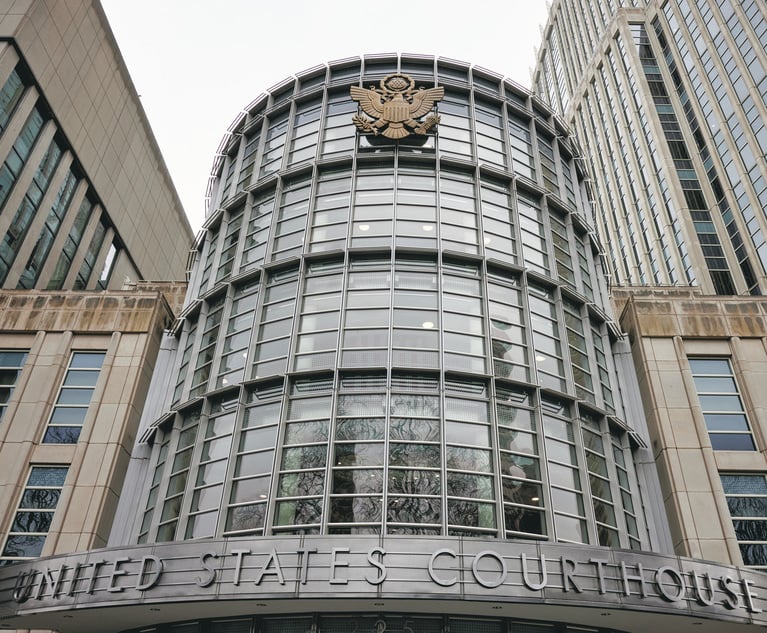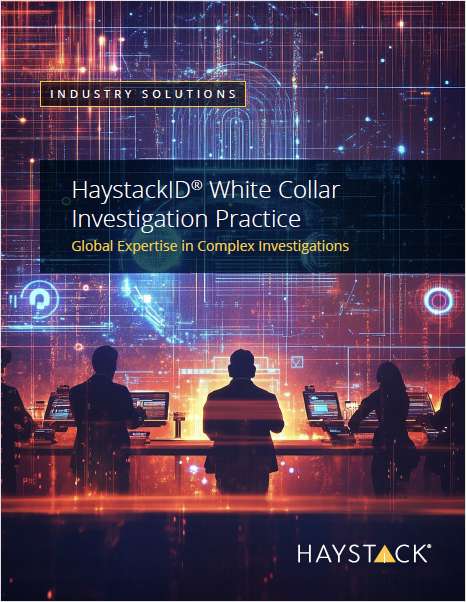Overhaul the Bar Exam? Two Major Studies Focus on the Test's Future
Both the National Conference of Bar Examiners and the Institute for the Advancement of the American Legal System are analyzing whether the current test is the best measure of new lawyers' competence.
July 31, 2019 at 01:21 PM
5 minute read

Nearly 50,000 law graduates are wrapping up the two-day bar exam today—a test that has largely remained unchanged for decades.
But the lawyer licensing exam could look much different in another 10 years. Two large-scale studies are underway to examine the knowledge and skills new lawyers need to succeed and how well—or not—the existing bar exam assesses those competencies. Those findings could prompt changes in not only what is tested, but the format of the exam as well.
The National Conference of Bar Examiners is midway through a three-year project examining every aspect of the test—an initiative dubbed the Testing Task Force. The task force recently concluded its first phase, which involved 30 listening sessions in which it gathered input from more than 400 people on the bar exam and its future. The second phase, looking at lawyer tasks and skills, gets underway in August.
Meanwhile, the Institute for the Association for the Advancement of the American Legal System on July 29 announced its own study of the exam, called Building a Better Bar: Capturing Minimum Competence. That study aims to define minimum lawyer competency—that is, the threshold of competencies new lawyers need to ensure they can adequately serve clients.
“Understanding minimum competence will be a watershed moment for the legal profession and those responsible for assessing and admitting lawyers to practice law,” said IAALS executive director Rebecca Love Kourlis of the new study. “Only through a clear understanding of what minimum competence is can we treat test takers fairly, serve clients effectively, promote diversity, and improve access to justice.”
Minimum lawyer competencies are a hot-button issue at a time when bar pass rates across the country have been in decline, particularly because jurisdictions set their own bar cut scores. California’s high cut score has been a source of controversy, with many critics saying that high threshold is not necessarily correlated to the minimum competencies new lawyers need in order to protect the public. Establishing a national baseline will help individual jurisdictions reach decisions about their own standards for lawyer admission and help align the test with those objectives.
The bar exam has also come under mounting criticism for what some see as an outdated format that rewards rote memorization over analytical ability and client-focused skills.
The IAALS study will be led by Deborah Merritt, a professor at Ohio State University Michael E. Moritz College of Law and is being funded by Ohio State and the nonprofit AccessLex Institute. Researchers plan to conduct 60 focus groups in 12 states in an effort to gather input on minimum lawyer competence. They aim to speak with many new attorneys to pinpoint the knowledge and skills that make them effective, as well as more seasoned attorneys who supervise new lawyers.
“Traditional job analyses can mask the views of these groups, yet their perspectives are essential to establishing a valid measure of minimum competence,” Merritt said. “In the end, we will provide concrete data that state regulators can use to improve licensing, protect the public, and advance justice for all.”
The bar exam study is a continuation of earlier research IAALS conducted on professional skills and legal hiring. Those studies concluded that character—including integrity, resilience, work ethic and common sense—are the most desirable qualities in new lawyers. They also found that public interest organizations and government entities do a better job of hiring attorneys with those qualities than do law firms.
The National Conference of Bar Examiners plans to release a report on the first phase of its Testing Task Force that includes an executive summary of the findings as well as summaries of specific listening sessions.
Missouri appellate judge Cynthia Martin, who is chairing the task force, has said that its review of the bar exam is among the most comprehensive ever and that every aspect of the exam is coming under the microscope. The national conference has already retained two independent research firms to handle the next two phases of the project. The second phase, which will soon get underway, is a practice analysis that seeks to identify the tasks newly licensed lawyers must perform and what skills and knowledge are necessary to perform those tasks. The third and final phase of the project will look at the design of the bar exam and make recommendations about how it can be improved. The Task Force aims to have its final recommendations in place sometime in 2021.
But updating the bar exam is a complex matter, particularly because of the many stakeholders involved. State jurisdictions control lawyer licensing decisions, but national groups, including the National Conference of Bar Examiners, the America Bar Association and individual law schools also play a role in how new lawyers join the profession. Thus, reaching a consensus on how the improve the bar exam is not an easy feat.
This content has been archived. It is available through our partners, LexisNexis® and Bloomberg Law.
To view this content, please continue to their sites.
Not a Lexis Subscriber?
Subscribe Now
Not a Bloomberg Law Subscriber?
Subscribe Now
NOT FOR REPRINT
© 2024 ALM Global, LLC, All Rights Reserved. Request academic re-use from www.copyright.com. All other uses, submit a request to [email protected]. For more information visit Asset & Logo Licensing.
You Might Like
View All
'What Is Certain Is Uncertainty': Patchwork Title IX Rules Face Expected Changes in Second Trump Administration
5 minute read
'No Evidence'?: Big Law Firms Defend Academic Publishers in EDNY Antitrust Case
3 minute read
Law Firms Are Turning to Online Training Platforms as Apprenticeship Model Falters

'Substantive Deficiencies': Judge Grants Big Law Motion Dismissing Ivy League Price-Fixing Claims
3 minute readTrending Stories
- 1Corporate Counsel's 2024 Award Winners Performed Legal Wizardry, Gave a Hand Up to Others
- 2Goodwin, Polsinelli, Fox Rothschild Find New Phila. Offices
- 3Helping Lawyers Move Away from ‘Grinding’ and Toward a ‘Flow’
- 4How GC-of-Year Sam Khichi Has Helped CVS Barrel Through Challenges
- 5A Website is Not a ‘Place.’ What Took So Long To Get This Right?
Who Got The Work
Michael G. Bongiorno, Andrew Scott Dulberg and Elizabeth E. Driscoll from Wilmer Cutler Pickering Hale and Dorr have stepped in to represent Symbotic Inc., an A.I.-enabled technology platform that focuses on increasing supply chain efficiency, and other defendants in a pending shareholder derivative lawsuit. The case, filed Oct. 2 in Massachusetts District Court by the Brown Law Firm on behalf of Stephen Austen, accuses certain officers and directors of misleading investors in regard to Symbotic's potential for margin growth by failing to disclose that the company was not equipped to timely deploy its systems or manage expenses through project delays. The case, assigned to U.S. District Judge Nathaniel M. Gorton, is 1:24-cv-12522, Austen v. Cohen et al.
Who Got The Work
Edmund Polubinski and Marie Killmond of Davis Polk & Wardwell have entered appearances for data platform software development company MongoDB and other defendants in a pending shareholder derivative lawsuit. The action, filed Oct. 7 in New York Southern District Court by the Brown Law Firm, accuses the company's directors and/or officers of falsely expressing confidence in the company’s restructuring of its sales incentive plan and downplaying the severity of decreases in its upfront commitments. The case is 1:24-cv-07594, Roy v. Ittycheria et al.
Who Got The Work
Amy O. Bruchs and Kurt F. Ellison of Michael Best & Friedrich have entered appearances for Epic Systems Corp. in a pending employment discrimination lawsuit. The suit was filed Sept. 7 in Wisconsin Western District Court by Levine Eisberner LLC and Siri & Glimstad on behalf of a project manager who claims that he was wrongfully terminated after applying for a religious exemption to the defendant's COVID-19 vaccine mandate. The case, assigned to U.S. Magistrate Judge Anita Marie Boor, is 3:24-cv-00630, Secker, Nathan v. Epic Systems Corporation.
Who Got The Work
David X. Sullivan, Thomas J. Finn and Gregory A. Hall from McCarter & English have entered appearances for Sunrun Installation Services in a pending civil rights lawsuit. The complaint was filed Sept. 4 in Connecticut District Court by attorney Robert M. Berke on behalf of former employee George Edward Steins, who was arrested and charged with employing an unregistered home improvement salesperson. The complaint alleges that had Sunrun informed the Connecticut Department of Consumer Protection that the plaintiff's employment had ended in 2017 and that he no longer held Sunrun's home improvement contractor license, he would not have been hit with charges, which were dismissed in May 2024. The case, assigned to U.S. District Judge Jeffrey A. Meyer, is 3:24-cv-01423, Steins v. Sunrun, Inc. et al.
Who Got The Work
Greenberg Traurig shareholder Joshua L. Raskin has entered an appearance for boohoo.com UK Ltd. in a pending patent infringement lawsuit. The suit, filed Sept. 3 in Texas Eastern District Court by Rozier Hardt McDonough on behalf of Alto Dynamics, asserts five patents related to an online shopping platform. The case, assigned to U.S. District Judge Rodney Gilstrap, is 2:24-cv-00719, Alto Dynamics, LLC v. boohoo.com UK Limited.
Featured Firms
Law Offices of Gary Martin Hays & Associates, P.C.
(470) 294-1674
Law Offices of Mark E. Salomone
(857) 444-6468
Smith & Hassler
(713) 739-1250








